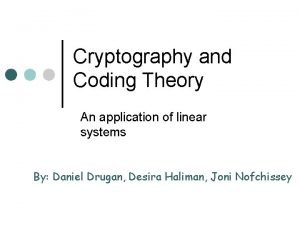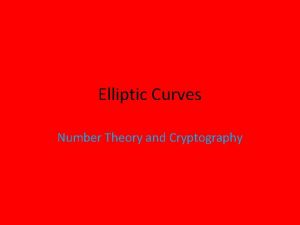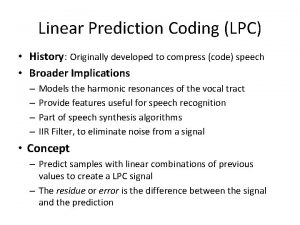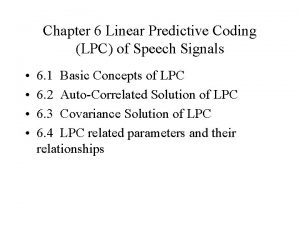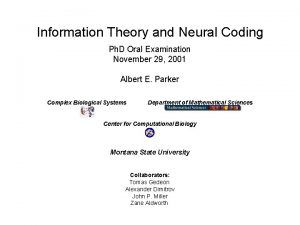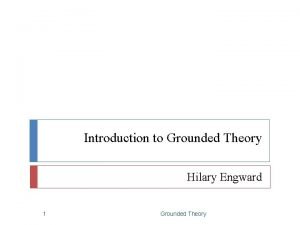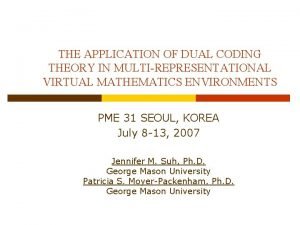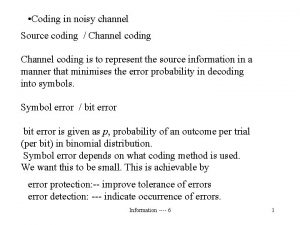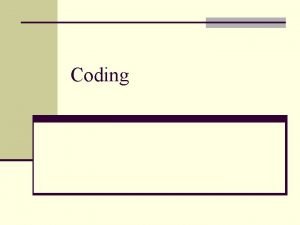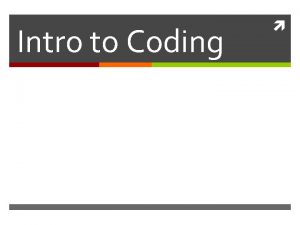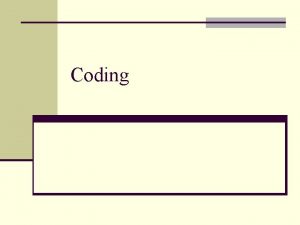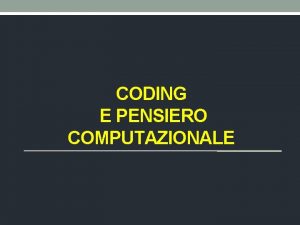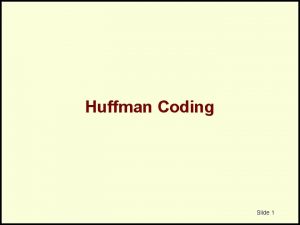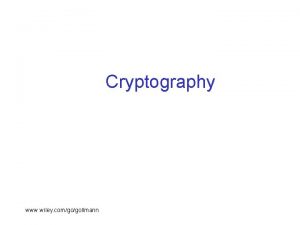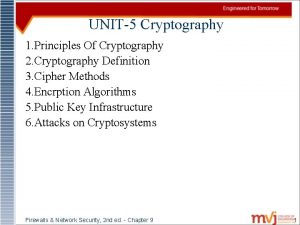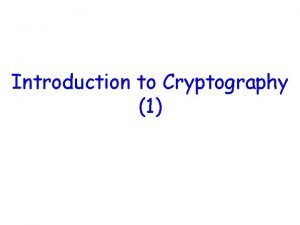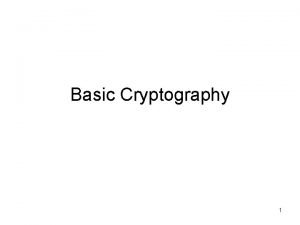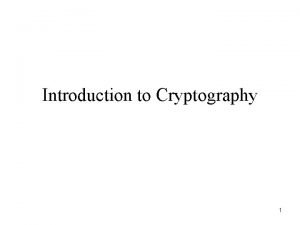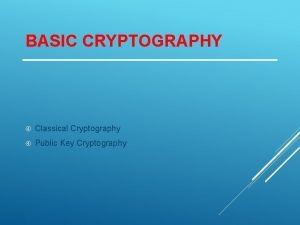Cryptography and Coding Theory An application of linear
















- Slides: 16

Cryptography and Coding Theory An application of linear systems By: Daniel Drugan, Desira Haliman, Joni Nofchissey

Linear Applications ¢ Method One : Cryptography l l ¢ Invertible matrices Matrix multiplication Method Two : Coding Theory l l Modular arithmetic Error correcting code Matrix multiplication Binary code

Cryptography ¢ ¢ ¢ Study of encoding and decoding secret messages Useful in sending sensitive information so that only the intended receivers can understand the message A common use of cryptography is to send government secrets.

A 1 B 2 C 3 D 4 E 5 F 6 G 7 H 8 I 9 J 10 K 11 L 12 M 13 N 14 Encoding ¢ ¢ ¢ First we will assign numbers to represent each letter of the alphabet. We then create a “plaintext” matrix that holds the message in terms of numbers. Then we pick an invertible square matrix, which can be multiplied with the “plaintext matrix”. O 15 P 16 Q 17 R 18 S 19 T 20 U 21 V 22 W 23 X 24 Y 25 Z 26 _ 27 ‘ 28

Encrypting the Message x Encoding matrix = Ciphertext Plaintext

Deciphering the Message ¢ In order to decode the message, we would have to take the inverse of the encoding matrix to obtain the decoding matrix. ¢ Multiplying the decoding matrix with the ciphertext would result in the plaintext version. ¢ Then the arbitrarily assigned number scheme can be used to retrieve the message.

A 1 B 2 C 3 D 4 E 5 F 6 G 7 H 8 I 9 J 10 K 11 L 12 M 13 N 14 Decrypting the Message x = O 15 P 16 Q 17 R 18 S 19 T 20 U 21 V 22 W 23 X 24 Y 25 Z 26 _ 27 ‘ 28

YOU MIGHT WANT TO READ THIS. A 1 B 2 C 3 D 4 E 5 F 6 G 7 H 8 I 9 J 10 K 11 L 12 M 13 N 14 O 15 P 16 Q 17 R 18 S 19 T 20 U 21 V 22 W 23 X 24 Y 25 Z 26 _ 27 ‘ 28

Coding Theory Have the ability to detect the presence of errors, as well as reconstruct the original, error-free data ¢ Coding Theory applications exist in many forms of digital technology. An example would be sending a message across a noisy channel with perfect reception. ¢

Theorem 3. 34 (Basic Ideas) ¢ standard generator matrix G = ¢ standard parity (error-detecting matrix) check matrix P = ¢ P is the parity check matrix associated with G if and only if A = B. ¢ The corresponding (n, k) binary code is (single) error-correcting if and only if the columns of P are nonzero and distinct. ¢ Note: most digital messages are written in sequences of 0’s and 1’s in binary code

(7, 4) Hamming Code ¢ We will use three parity check equations: l ¢ n – k = 3 and k = n – 3 Eq’n 1 P= Eq’n 2 Eq’n 3 3 x 7 matrix ¢ Therefore, theorem 3. 34 states G = 7 x 4 matrix (7, 4) Hamming Code

Encoding ¢ We want to encode x = ¢ So, C = G • x = T = =

Parity Check ¢ ¢ Pc’=0 for this code to be a correct code Pc’= = =

SUCCESS! ¢ Since Pc’=0, our code is correct, however had we made an error in multiplying our first batch of matrices to obtain c, Pc’ ≠ 0…say we had the incorrect C vector (0 1 1 1 0) and did our parity check…

Parity Check Dos ¢ ¢ Pc’=0 for this code to be a correct code Pc’= = =

Thanks for listening!
 Selective coding adalah
Selective coding adalah Contoh open coding, axial coding selective coding
Contoh open coding, axial coding selective coding Application of linear algebra in cryptography
Application of linear algebra in cryptography Coding dna and non coding dna
Coding dna and non coding dna Axial coding vs open coding
Axial coding vs open coding Number theory in cryptography and network security
Number theory in cryptography and network security Elliptic curves number theory and cryptography
Elliptic curves number theory and cryptography Linear predictive coding
Linear predictive coding Lpc linear predictive coding
Lpc linear predictive coding Information theory and neural coding
Information theory and neural coding Benefits of grounded theory
Benefits of grounded theory What is grounded theory
What is grounded theory Coding theory
Coding theory Dual coding theory in mathematics
Dual coding theory in mathematics Simple linear regression and multiple regression
Simple linear regression and multiple regression Non-linear text
Non-linear text What is nonlinear plot
What is nonlinear plot


